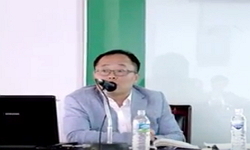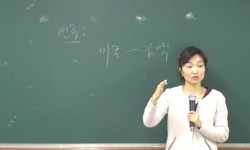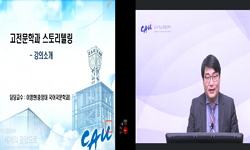본 연구의 목적은 18세기 사대부들에 의해 창작된 기행가사를 연구대상으로 설정하여 형식과 내용의 균형있는 고찰을 시도함으로써 미의식과 주제 의식을 추출하여 기행가사의 문학성을 재...
http://chineseinput.net/에서 pinyin(병음)방식으로 중국어를 변환할 수 있습니다.
변환된 중국어를 복사하여 사용하시면 됩니다.
- 中文 을 입력하시려면 zhongwen을 입력하시고 space를누르시면됩니다.
- 北京 을 입력하시려면 beijing을 입력하시고 space를 누르시면 됩니다.
https://www.riss.kr/link?id=T9067357
- 저자
-
발행사항
부산 : 동아대학교 교육대학원, 1999
-
학위논문사항
학위논문(석사) -- 동아대학교 교육대학원 , 국어교육전공 , 1999. 8
-
발행연도
1999
-
작성언어
한국어
- 주제어
-
KDC
811.25 판사항(4)
-
DDC
895.712 판사항(19)
-
발행국(도시)
부산
-
형태사항
iii, 89p. : 삽도 ; 26cm
-
일반주기명
참고문헌: p. 88-90
- 소장기관
-
0
상세조회 -
0
다운로드
부가정보
국문 초록 (Abstract)
본 연구의 목적은 18세기 사대부들에 의해 창작된 기행가사를 연구대상으로 설정하여 형식과 내용의 균형있는 고찰을 시도함으로써 미의식과 주제 의식을 추출하여 기행가사의 문학성을 재조명하는 데 있다,
본 연구를 수행하기 위하여 주로 활용한 연구 방법은 구조주의와 심리주의의 접근 방식을 취하였다. 즉, 작품의 전개 과정이나 단계가 무엇이며, 작품 속에서 새로운 요인의 개입이나 환경 변화가 어떻게 일어났는지를 살펴보고, 작자의 개인적인 경험과 세계관이 어떻게 작품에 반영되었는지를 검토함으로써 기행가사에 나타난 미적 체험과 의식의 양상을 살펴보았다.
그 내용을 간추려 보면 다음과 같다.
첫째, 18세기 기행가사는 시간적 순서에 의해 出發, 路程, 目的地, 歸路에 이르는 完結的 구조를 갖춘 작품과 네 단계 중 특정한 단계가 축약·강조·확대되는 擴張的 구조를 갖춘 작품으로 나눌 수 있다. 前者에 속하는 것은 「明村金剛別曲」,「日東壯遊歌」로서 작자가 자신의 여행에 대해 만족감을 느끼면서 여행의 끝을 인지하고 창작한 것이며, 後者에 속하는 것은 「漂海歌」,「耽羅別曲」,「丹山別曲」,「北征歌」,「箕城別曲」으로 작자가 여행을 통해 미처 해소하지 못한 심리적 갈등이 남아 있는 가운데 여행이 아직 종료되지 않았다고 느끼면서 창작된 것이다.
둘째, 18세기 기행가사는 遊覽紀行歌辭, 官行紀行歌辭, 使行紀行歌辭, 漂海紀行歌辭로 나누어진다. 이 유형들의 여행동기를 살펴보면, 遊覽紀行歌辭는 번잡한 일상 생활을 벗어나 자연에서 안식을 추구하기 위한 것이며, 官行紀行歌辭는 관리로서 책무를 다하기 위해 관내를 巡行하기 위한 것이며, 使行紀行歌辭는 王命에 의해 국가의 외교적 소임을 다하기 위한 것이며, 漂海紀行歌辭는 천재지변으로 바다에 표류 하다가 異國에 표착하여 다시 고국으로 돌아옴에 있는 것이다.
셋째, 18세기 기행가사는 작품의 창작 의도가 작품에 直敍的으로 드러나 있다.
「明村金剛別曲」은 금강산 유람의 체험을 간직하려는 목적에서,「耽羅別曲」은 궁핍한 백성들의 實狀을 정확히 임금께 전하려는 목적에서, 「箕城別曲」에는 전국의 관리들에게 善政을 베풀어 國恩에 報答할 것을 촉구하려는 사회적 목적에서, 「北征歌」는 老母에게 자신의 체험담을 보여드려 위로하려는 목적에서, 「日東壯遊歌」는 일본의 異國的 견문과 체험을 자손들에게 자세히 전하려는 목적에서, 「漂海歌」는 표류의 극적인 체험과 거대한 중국 대륙의 견문을 후손들에게 글로 남겨 전하려는 목적에서 창작한 것이다.
넷째, 18세기 기행가사는 漢詩의 엄격한 定型性에서 벗어나 우리말로 자연스럽게 자신의 감정을 나타내고자 하였다. 산문화되기 쉬운 장편의 기행가사에서 자신의 개성을 효과적으로 표현하기 위해 전통적 표현 양식을 잘 활용하였다. 이러한 표현 양식은 比喩的·反復的·對句的 표현으로 나눌 수 있다.
다섯째, 18세기 기행가사는 觀念的 倫理的 世界觀에서 벗어나 經驗論的 세계관이 심화되면서 개인적 자아가 중요시되었으며, 주체적인 역사의식을 회복하고 나아가 국방력의 중요성을 자각하는 사회적 자아의 발달을 보여주었으며, 외국의 이질적인 견문을 통해 實事求是의 實用主義로 전환하는 세계관의 변화를 여실히 반영하고 있다.
다국어 초록 (Multilingual Abstract)
The purpose of this study is re-illumination of the nature of literature on the Kihaeng-Kasa(verse accounts of travel) by extracting the beauty awareness and subject awareness through the balanced consideration between forms and contents of the Kihaen...
The purpose of this study is re-illumination of the nature of literature on the Kihaeng-Kasa(verse accounts of travel) by extracting the beauty awareness and subject awareness through the balanced consideration between forms and contents of the Kihaeng-Kasa created by Sadaebu(the persons of high birth) in the 18th century.
The main study methods practically used to carry out this study have gotten approaches of the structural theory and psychological theory. In other words, I looked out what are the unfolding courses or stages of the works, how intervention of the new factors or the change of environment occurs in the works and then further looked out the personal experience of beauty and appearance of awareness expressed in the Kihaeng-Kasa by inspecting how the writers have reflected their individual experience and the view of the world in their works.
The contents are as follows, if summarized.
1) The Kiaheng-Kasa of the 18th century will divided into two types of works that is, one has the complete structure that express departure, itinerary, destination and the road back according to the time order, and the other has the uncompleted structure which missed any of four stages. The works belonging to the former are the 「Myu˘ngchon Ku˘mkang Byo˘lkok」(명촌금강별곡) and 「Ildong Jangyuka」(일동장유가) and the writers created them recognizing the end of the journey. The works belonging to feeling satisfaction for their journey and the latter are 「Pyohaeka」(표해가), 「Tamra Byo˘lkok」(탐라별곡), 「Dansan Byo˘lkok」(단산별곡), 「Pukjongka」(북정가) and 「kisu˘ng Byo˘kok」(기성별곡) and the writers created them feeling psychological discord which has dissolved through their journeys and feeling that they did finish the journey yet.
2) The Kihaeng-Kasa of the 18th century will be divided into the 「Yuram Kihaeng-Kasa」(유람기행가사), 「Kwanhaeng Kihaeng-Kasa」(관행기행가사), 「Saheng Kihaeng-Kasa」(사행기행가사) and 「Pyohae Kihaeng-Kasa」(표해기행가사). If we look out the journey motivation by the types, 「Yuram Kihaeng-Kasa」(Sightseeing Journey) is for rest in the nature escaping from the complicated daily life, the 「Kwanhaeng Kihaeng-Kasa」 is for the patrol for his duty as a of official, 「Saheng Kihaeng-Kasa」 is for his diplomatic mission of the nation by King's order and 「Pyohae Kihaeng-Kasa」 is for return to native country by drifting with the natural disaster.
3) The Kihaeng-Kasa of the 18th century describes its created opinion directly in itself, 「Myu˘ngchon Kumkang Byo˘lkok」 was created for the purpose to keep their personal experience about the Ku˘mkang Mountain Journey, 「Tamra Byo˘lkok」 for the urge the national officials to inform the king of the real life of miserable people, 「Kisu˘ng Byo˘lkok」 for the social purpose to pursue to recompense to govern well and repay favors benefited by their country, 「Pu˘kjungka」 for the purpose to comfort his old mother by showing their personal experience, 「Ildong Jangyuka」 for the purpose to transmit his Knowledge of exotic Japan to their descendants in detail, 「Pyohaeka」 for the purpose to transmit the dramatic experiences of drifting and Knowledge of the great continent of China to their descendants in written.
4) The Kihaeng-Kasa of the 18th century tried to freely express their self-emotion in our language escaping from the rigid formation of the Chinese poetry. In order to effectively express their individuality from the full-length of the Kihaeng-Kasa, which is apt to be prosaic the traditional expressional formations were practically used. Such a expressional formation is divided into the metaphorical, repeated and the phrasic expression.
5) The Kihaeng-Kasa of the 18th century was thought highoy of the individual ego deepening the world views of empiricism free from the conceptional, ethical world views, the historical awareness of subjecthood will he recovered and moreover, showed the development of the social ego being self-consciousness for importance of the national defense power, and also showed the modification of the views of the world changing to pragmatism that seek for truth the real existences through the distinctive knowledge of the foreign country.
목차 (Table of Contents)
- 목차 = ⅲ
- Ⅰ. 序論 = 1
- 1. 硏究 目的 = 1
- 2. 硏究 範圍 = 3
- 3. 硏究 方法 = 6
- 목차 = ⅲ
- Ⅰ. 序論 = 1
- 1. 硏究 目的 = 1
- 2. 硏究 範圍 = 3
- 3. 硏究 方法 = 6
- Ⅱ. 18世紀 紀行歌辭의 構造와 類型 = 8
- 1. 路程에 따른 順次的 構造 = 8
- 2. 類型別 特性 = 26
- Ⅲ. 18世紀 紀行歌辭의 表現上 特質 = 48
- 1. 比喩에 의한 代替 效果 = 49
- 2. 反復에 의한 强調 效果 = 54
- 3. 對句에 의한 呼應 = 59
- Ⅳ. 世界觀의 多層的 現實 認識 = 64
- 1. 存在的 自我의 現實認識 = 65
- 2. 社會的 自我의 民族 意識의 擴充 = 70
- 3. 外國 見聞의 異質的 體驗과 傳達 = 74
- Ⅴ. 結論 = 79
- 參考文獻 = 84
- Abstract = 87












